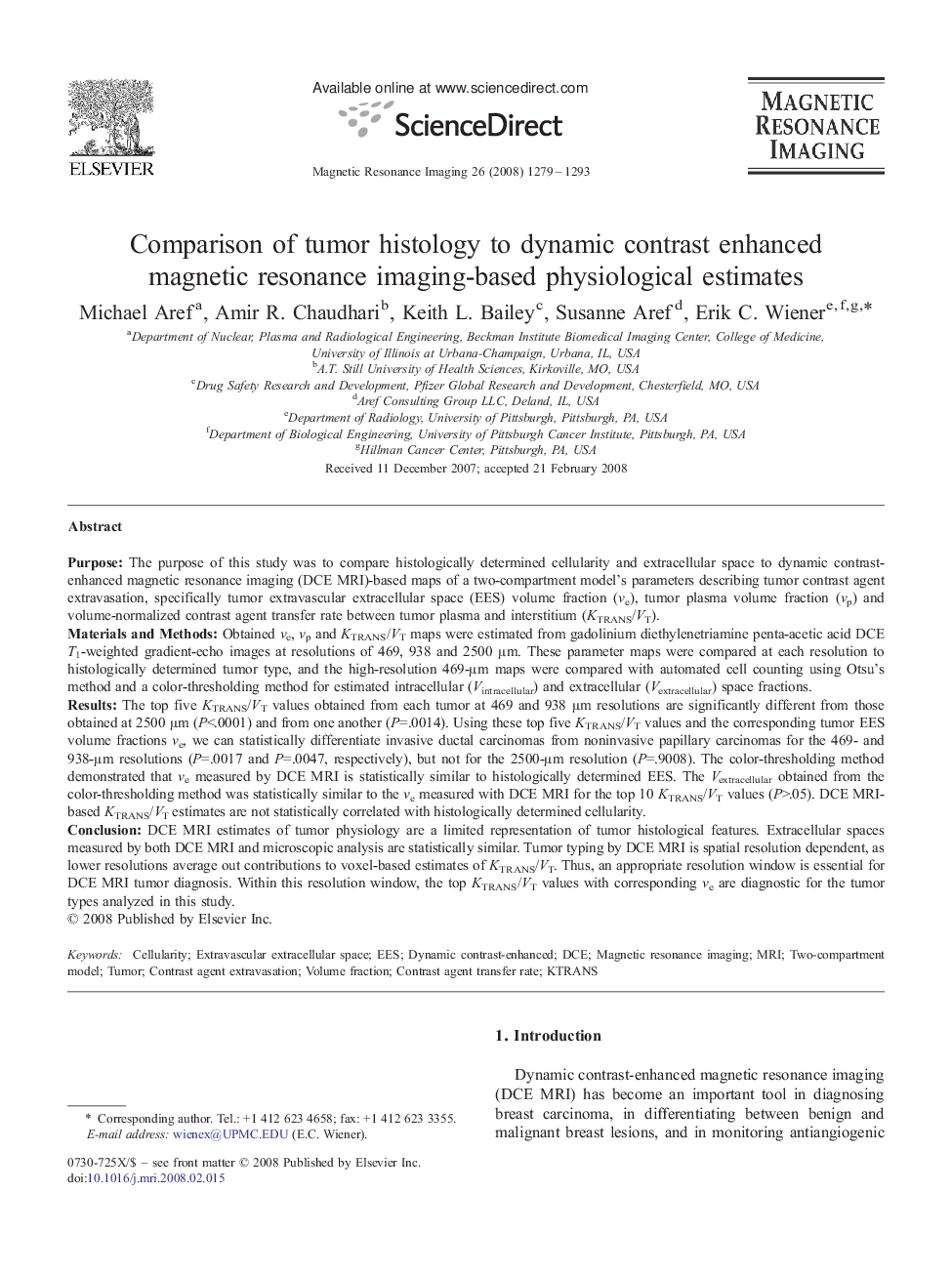| Article ID | Journal | Published Year | Pages | File Type |
|---|---|---|---|---|
| 1807093 | Magnetic Resonance Imaging | 2008 | 15 Pages |
PurposeThe purpose of this study was to compare histologically determined cellularity and extracellular space to dynamic contrast-enhanced magnetic resonance imaging (DCE MRI)-based maps of a two-compartment model's parameters describing tumor contrast agent extravasation, specifically tumor extravascular extracellular space (EES) volume fraction (ve), tumor plasma volume fraction (vp) and volume-normalized contrast agent transfer rate between tumor plasma and interstitium (KTRANS/VT).Materials and MethodsObtained ve, vp and KTRANS/VT maps were estimated from gadolinium diethylenetriamine penta-acetic acid DCE T1-weighted gradient-echo images at resolutions of 469, 938 and 2500 μm. These parameter maps were compared at each resolution to histologically determined tumor type, and the high-resolution 469-μm maps were compared with automated cell counting using Otsu's method and a color-thresholding method for estimated intracellular (Vintracellular) and extracellular (Vextracellular) space fractions.ResultsThe top five KTRANS/VT values obtained from each tumor at 469 and 938 μm resolutions are significantly different from those obtained at 2500 μm (P<.0001) and from one another (P=.0014). Using these top five KTRANS/VT values and the corresponding tumor EES volume fractions ve, we can statistically differentiate invasive ductal carcinomas from noninvasive papillary carcinomas for the 469- and 938-μm resolutions (P=.0017 and P=.0047, respectively), but not for the 2500-μm resolution (P=.9008). The color-thresholding method demonstrated that ve measured by DCE MRI is statistically similar to histologically determined EES. The Vextracellular obtained from the color-thresholding method was statistically similar to the ve measured with DCE MRI for the top 10 KTRANS/VT values (P>.05). DCE MRI-based KTRANS/VT estimates are not statistically correlated with histologically determined cellularity.ConclusionDCE MRI estimates of tumor physiology are a limited representation of tumor histological features. Extracellular spaces measured by both DCE MRI and microscopic analysis are statistically similar. Tumor typing by DCE MRI is spatial resolution dependent, as lower resolutions average out contributions to voxel-based estimates of KTRANS/VT. Thus, an appropriate resolution window is essential for DCE MRI tumor diagnosis. Within this resolution window, the top KTRANS/VT values with corresponding ve are diagnostic for the tumor types analyzed in this study.
